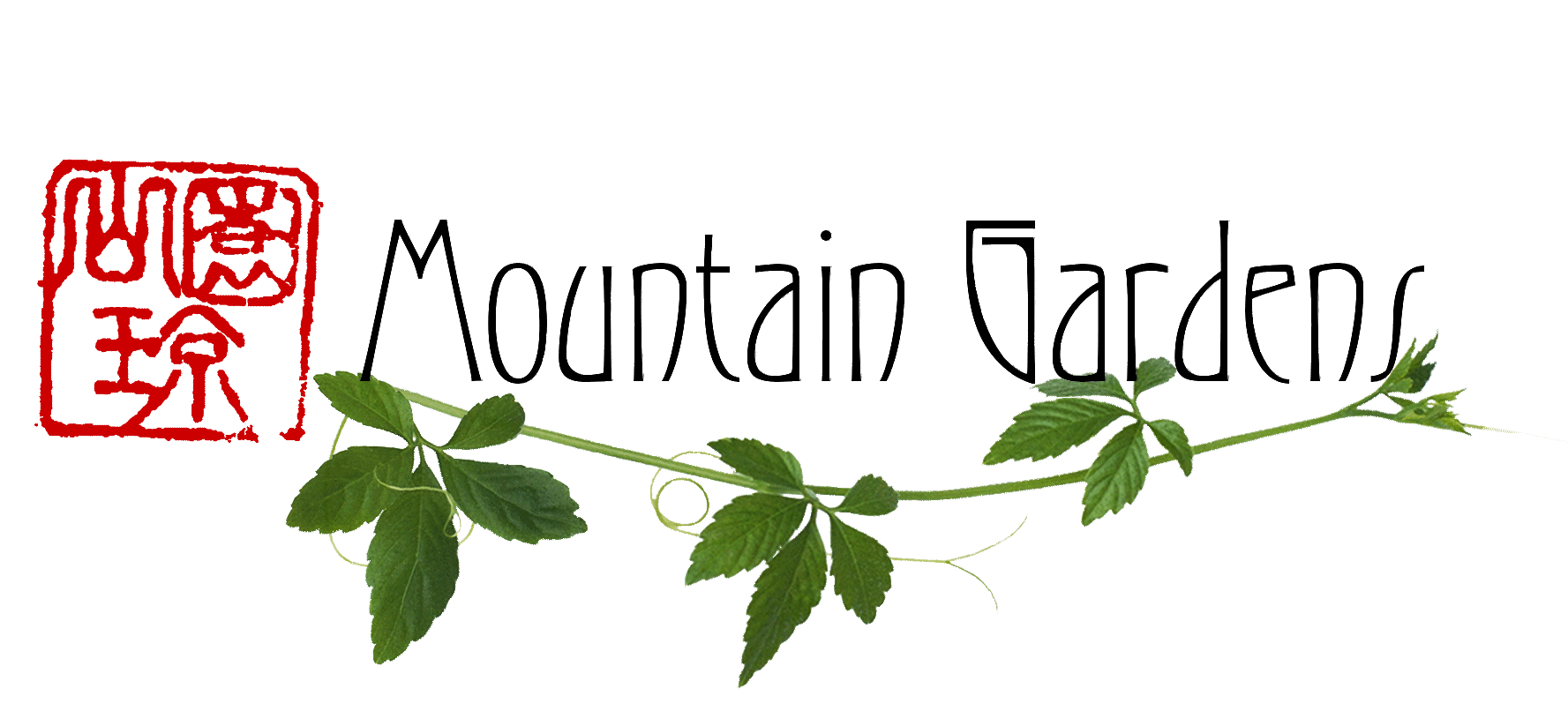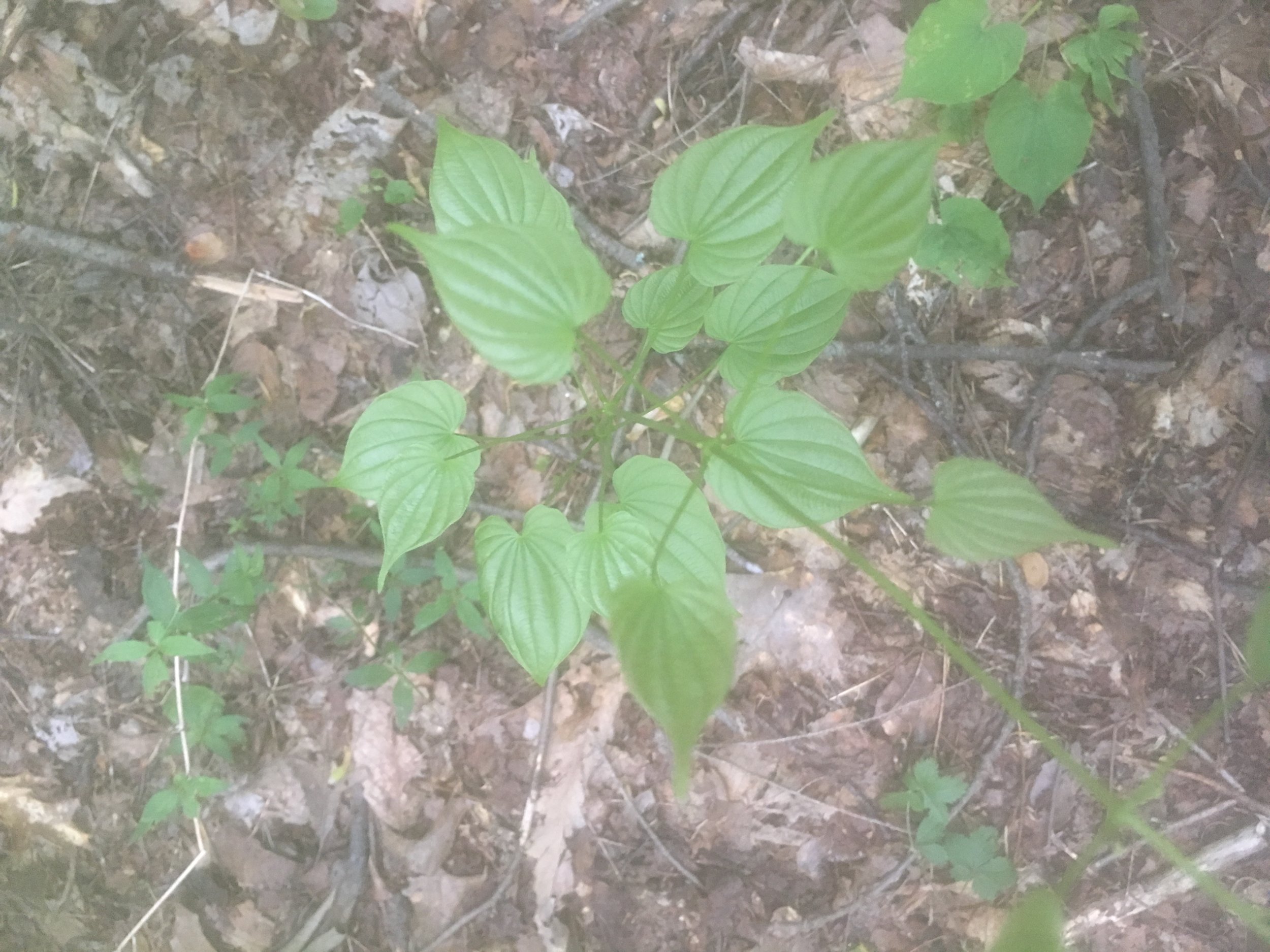Preservation and Conservation through Seed Collecting
Dioscorea villosa
In addition to the usual pressures of habitat loss or degradation, native medicinal herbs are subject to the threat of over harvesting for market. This threat can be expected to increase due to rising prices (reflecting increasing consumer interest in herbs) and a growing number of people willing and able to make a living by wildcrafting.
It is important that we begin to identify and monitor populations of the most threatened medicinals, and develop cultivation as an alternative to wildcrafting. Mountain Gardens is a small (> $5,000/year) seed and nursery business. I attempt to address these concerns in the following ways:
EXPLORATION
I am constantly searching for new (to me) populations / seed collecting locations for the most threatened and least available (as seeds or plants) medicinals. This practice gradually leads to a practical, instinctive ‘feel’ for the species’ ecological preference. For example, Wild Yam (Dioscorea villosa) is fairly common in our area, but good seed collecting locations (reflecting, presumably, its ‘optimum niche’) are uncommon.
MONITORING
I try to visit these locations twice a year, at flowering and seed harvesting time. In addition to observing the population dynamics (increasing – decreasing), I may do some light pruning to encourage flowering (discourage competition). I also gain valuable information about the species phenology and fruiting cycle.
REPLANTING
At harvest time, I typically scatter (or actually plant) a percentage of the seeds in nearby areas of suitable habitat. For particularly rare species, I may actually dig excess or threatened seedlings and replant elsewhere in the same area. For example, mature ginseng plants are frequently surrounded by a small colony of seedlings. An unscrupulous collector would exterminate the entire colony, so my practice is to dig the young seedlings and replant, in hidden locations, as I walk along. Chamaelirium (see below) is a rare medicinal sometimes found in association with rhododendron; if I find plants which are obviously being shaded out by rhododendron, I move them to a more favorable location in the same area. Furthermore, having a supply of seed allows me to experiment with establishing species in new locations, for example, St. John’s wort (Hypericum perforatum) uncommon in our area, but sometimes found on roadsides, is a good candidate for some areas of impoverished soil.
SEED SALES
Any effort to reduce over harvesting by promoting cultivation must begin with seeds, but seeds of a number of threatened medicinals are hard to find or simply unavailable commercially. For example, I am, as far as I know, the only person collecting seed of wild yam and false unicorn root. I sell seeds wholesale to a few companies which offer a range of medicinals (Richters, Johnny’s, Horizon) and retail by mail order and, recently, packets in a few local stores. My preference is to serve herb users who wish to grow their own.
EXPERIMENTATION
Mountain Gardens is a botanic garden of useful plants, and I am attempting to grow at least a sample of all of our important native herbs here. This involves developing procedures for seed germination, nursery practice, cultivation and habitat selection and/or modification.
EDUCATION
I conduct workshops on growing medicinal herbs, write articles for local publications, and maintain information on germination and cultivation on this website. Mountain Gardens is open to the public as a place where one can observe our native medicinals in garden, naturalized and wild settings.
EXAMPLE
Chamaelirium luteum (fairy wand, devil’s bit, false unicorn root) is an attractive wildflower whose root is considered tonifying to the female reproductive system. Frontier Herbs recently discontinued offering this herb because it is threatened and there are no cultivated sources, but it is available from other dealers at over $50/lb. This species occurs in scattered locations in the NC mountains and piedmont; populations can be abundant in particular locations, but locations are uncommon. The plant has a distinctive, evergreen rosette which allows for easy identification at all times of year. A wild crafter can easily exterminate an entire population in a few hours, and several of my best locations have met this fate recently. Seed harvesting is difficult as the seeds do not ripen until very late, by which time many of the seed stalks have been knocked down by weather or lost to predators (and, it being dioecious, there are relatively few seed stalks in a population). Non-availability of seed is a primary factor in preventing the development of this species as a cultivated crop; as mentioned, I believe I am the only collector of this seed, and, owing to the loss of several locations, I only harvested one ounce last year.
NC SEED SEARCH
Any help in finding seed collecting locations for any of the following will be greatly appreciated. I am also interested in bartering for, or purchasing, seed of the following species, collected in North Carolina:
MOUNTAINS
Chamaelirium luteum
Aletris farinosa
Dioscorea villosa
Dioscorea quaternata
Panax trifolius
Polygala senega
Hydrastis canadensis
Baptisia tinctoria
Cimicifuga racemosa
Ulmus rubra
Apios americana
Cynoglossum virginianum
Aristolochia serpentaria
Swertia (Frasera) caroliniensis
Passiflora incarnata
Echium vulgare
Lithospermum arvense
Echinacea pallida
Baptisia tinctoria
Veronicastrum virginicum
Verbena hastata, officinalis
Scutellaria lateriflora
Cunila origanoides
Triosteum perfoliatum
Dodecatheon media
Cocculus carolinus
Menispermum canadense
Jeffersonia diphylla
Caltha palustris
Comptonia peregrina
Iris virginica
Acorus calamus
PIEDMONT – COAST
Onosmodium virginianum
Stillingia sylvatica
Helianthemum canadense
Echinacea laevigata
Echinacea pallida
Mimosa pudica
Baptisia tinctoria
Drosera spp.
Schizandra glabra
Tribulus terrestris
Lycium carolinianum
Lycium halimifolium
Polemonium reptans
Zanthoxylum clava-herculis
Fumaria officinalis
Serenoa repens
Alisma subcordatum
CONTACT JOE HOLLIS at joehollisherbs@gmail.com

